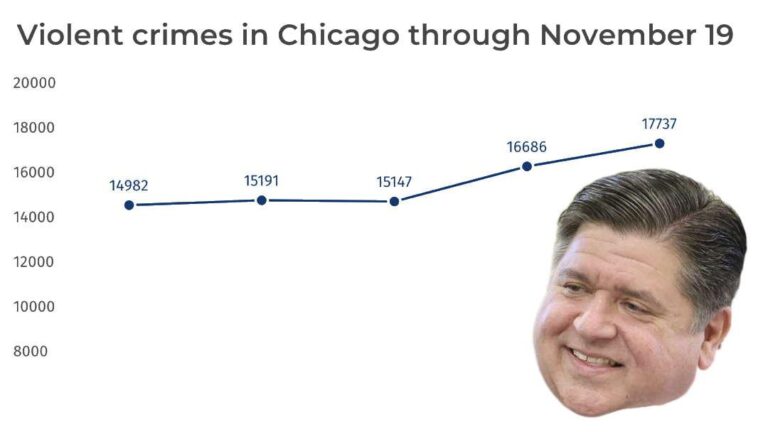In recent times, Chicago has been at the forefront of national discussions concerning crime and public safety. Emerging statistics reveal a downward trend in violent offenses citywide, presenting a cautiously optimistic outlook amid years of concern. Yet, this positive shift is met with skepticism by some community advocates and analysts who argue that the raw data may not fully reflect the lived experiences within neighborhoods. The upcoming 2025 season of Chicago Tonight on PBS aims to go beyond surface-level numbers, offering viewers an in-depth exploration of the factors influencing crime rates and the realities that statistics alone might overlook.
Examining Chicago’s Recent Decline in Violent Crime
Official reports indicate a notable reduction in violent crimes such as homicides, armed robberies, and aggravated assaults across Chicago. This trend has been welcomed by residents, law enforcement agencies, and policymakers alike. Key contributors to this betterment include:
- Expansion of community policing efforts fostering stronger neighborhood relationships
- Enhanced programs promoting local engagement and support
- Adoption of advanced technologies for real-time crime monitoring and analysis
- Increased investment in youth services and social support systems
Despite these encouraging figures, experts caution against interpreting the data without nuance. Certain districts continue to experience localized surges in violent incidents, and concerns about underreporting or misclassification of crimes persist. The table below compares violent crime statistics over recent years, illustrating these evolving patterns:
| Year | Homicides | Robberies | Assaults |
|---|---|---|---|
| 2022 | 524 | 4,800 | 7,955 |
| 2023 | 490 | 4,350 | 7,200 |
| 2024 (Q1) | 105 | 1,150 | 1,850 |
This complex landscape highlights ongoing debates: while progress is evident, many emphasize the importance of targeted, community-specific solutions and clarity. Chicagoans continue to seek sustainable approaches that not only lower crime rates but also improve overall safety and well-being.
Community Perspectives on Crime Data Reliability
Voices from neighborhoods across Chicago express doubt about the recent reports suggesting a decline in violent crime. Many residents and activists argue that official statistics fail to capture the full spectrum of challenges faced daily. Issues such as underreporting, fear of retaliation, and the nuances of crime classification contribute to a potentially incomplete picture.While some areas show measurable improvements, others still grapple with persistent safety concerns that numbers alone do not reveal.
- Disparities in data granularity: Variations between precinct-level and citywide statistics can lead to misleading conclusions.
- Qualitative experiences: The emotional and psychological impact of crime, including fear and trauma, is frequently enough absent from quantitative reports.
- Barriers to reporting: Distrust in law enforcement and concerns about personal safety discourage some victims from coming forward.
These contrasting viewpoints underscore the need for more inclusive and transparent crime monitoring systems. Advocates suggest integrating community-driven reporting mechanisms and enhancing public participation to enrich data accuracy. By combining official records with firsthand accounts, Chicago aims to develop a more complete understanding of its public safety environment.
Insights from Experts on the Decline in Violent Crime
Criminologists and public safety professionals attribute the recent downturn in violent crime reports to a multifaceted set of influences. Enhanced community policing,investments in cutting-edge surveillance technology,and focused intervention programs targeting vulnerable youth populations have all contributed substantially.Additionally, shifts in how crimes are reported and residents’ evolving relationships with law enforcement may affect the data’s portrayal.
Key contributing factors include:
- Refined data collection and crime analysis techniques
- Expanded social services addressing underlying causes of violence
- Strengthened collaborations between police departments and community organizations
- Economic developments influencing neighborhood dynamics
| Factor | Impact on Crime Trends |
|---|---|
| Community Engagement | Builds trust and encourages crime reporting |
| Technological Innovations | Improves prevention and evidence collection |
| Policy Reforms | Shifts enforcement focus and priorities |
| Economic Factors | Influences crime drivers and community stability |
Comprehensive Approaches to Tackling Root Causes of Violence
Effectively reducing violent crime in Chicago demands strategies that go beyond mere statistical analysis. Policymakers and community leaders increasingly advocate for holistic solutions centered on education, economic empowerment, and community policing to foster enduring improvements. Programs focusing on youth development, vocational training, and accessible mental health care have demonstrated potential in breaking cycles of violence by addressing socio-economic inequalities that often underlie criminal behavior.
Recommended policy initiatives include:
- Strengthening community relations: Cultivating trust through transparent communication and accountability between law enforcement and residents.
- Directed resource allocation: Prioritizing funding for neighborhoods disproportionately impacted by violence to enhance infrastructure and social programs.
- Collaborative networks: Promoting partnerships among schools, businesses, and nonprofit organizations to support inclusive community growth.
- Data-informed interventions: Leveraging detailed, localized data to design targeted initiatives that address specific community needs.
| Strategy | Area of Focus | Anticipated Outcome |
|---|---|---|
| Community Policing | Law Enforcement | Enhanced trust and crime reduction |
| Job Training Initiatives | Economic Development | Lower unemployment and decreased crime rates |
| Youth Mentorship Programs | Education & Outreach | Positive youth engagement and influence |
| Mental Health Support | Health & Wellness | Reduction in violence linked to trauma |
Final Thoughts
As Chicago navigates the intricate challenges of violent crime, the latest data offers a cautiously hopeful perspective. While reductions in certain violent offenses are evident, community members and experts alike stress the importance of looking beyond numbers to grasp the full scope of ongoing issues. Chicago Tonight remains dedicated to delivering thorough coverage,shedding light on both statistical trends and the personal stories behind them. Tune in to PBS throughout the 2025 season for continued insights and analysis as the city strives toward sustainable safety and justice for all its residents.





